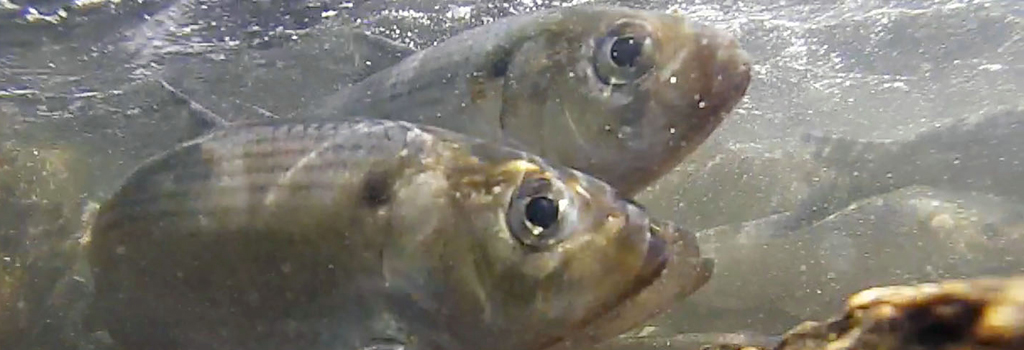River Herring

Over the past 300 years, what had been a bountiful harvest of river herring declined for many reasons including dam construction and poor water quality. In the late 20th century, herring populations sharply dropped to as little as one percent of their historic size.
Woods Hole Sea Grant is working in partnership with conservationists, river herring wardens, and others to monitor the population, to study it to understand the pressures on the species, and to develop solutions to help increase its numbers.
Research
- Closing the loop: characterizing habitat requirements, movements, and life stage linkages of river herring in Massachusetts watersheds (2020-2022)
- Use of Dual-Frequency Identification Sonar to Monitor Adult River Herring in a Small Coastal Stream (2010-2012)
- Beyond Fish Passage: Variability in Nursery Habitat and its Influence on the Feeding, Growth, and Survival of the Early Life Stages of River Herring (2014-2016)
Stories/video
- Video: River Herring Network Meeting
Nov. 2024 - Update on River Herring Network
Coastal Impacts newsletter, Nov. 2022 - Clearing the Way for River Herring
- Coastal Impacts newsletter, July 2019
- Up in the Sky -Drone finds hot spots to help restore fish to river
Oceanus magazine, Jan. 2018 - Update on River Herring Network
Coastal Impacts newsletter, Nov. 2018 - Update on River Herring Network
Coastal Impacts newsletter, Dec. 2017 - Interview with Abigail Archer, Woods Hole Sea Grant Marine Resource Specialist
Community TV
Outreach
- Community outreach to River Herring Wardens
- Support for the River Herring Network - a professional society for river herring wardens & volunteers, and a clearinghouse of information for river herring enthusiasts
- Voices from the Fisheries oral history project
Sea-Run Fish StoryMap
Each spring, hundreds of thousands of river herring rush through Massachusetts coastal waters to spawn. Explore stories of sea-run fish and the Sea Grant researchers working to understand and protect these ecologically vital species, including Adrian Jordaan and colleague's life-stage assessment project funded by Woods Hole Sea Grant.
